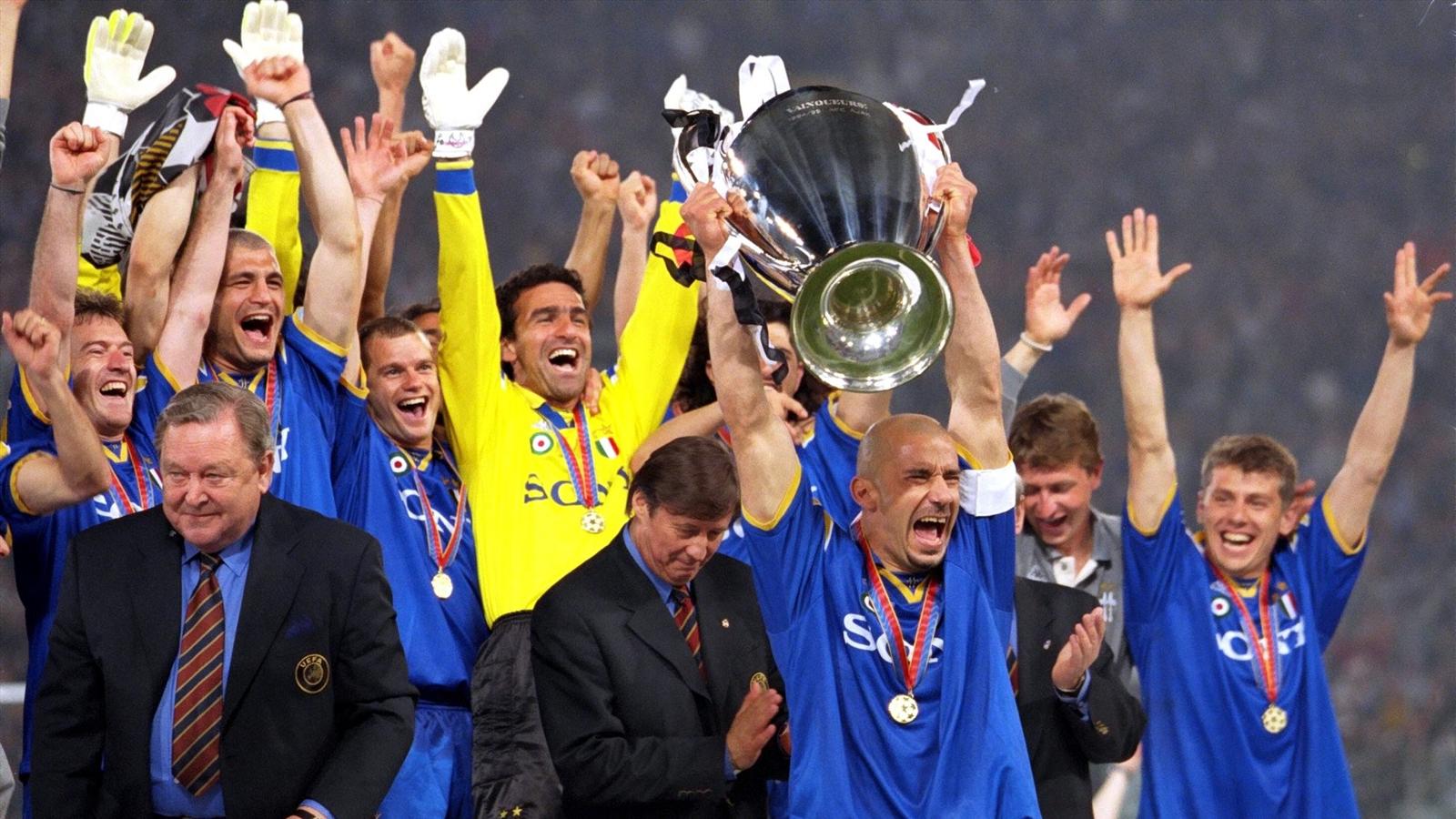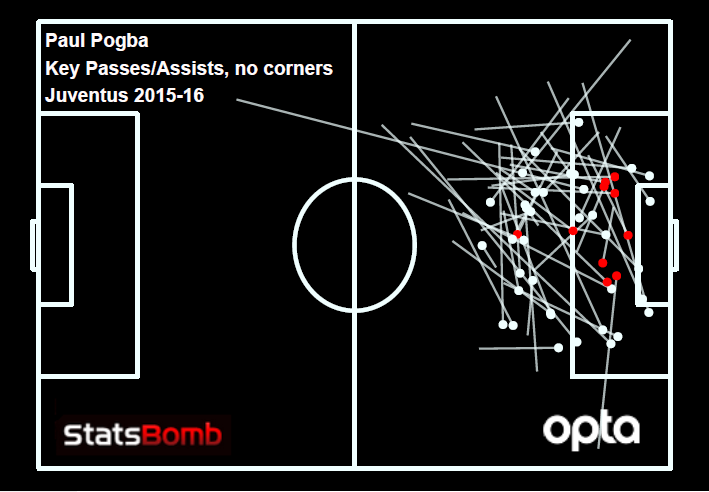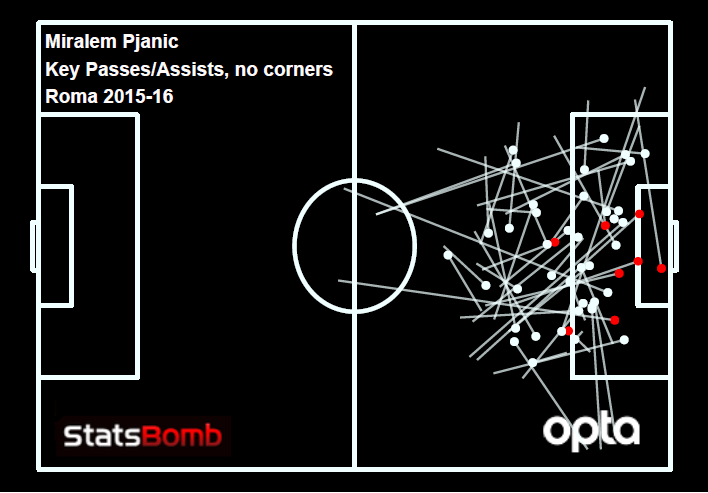Last season Juventus had their worst start in the Serie A in 54 years, collecting just 12 points from the first 10 games of their league campaign. Pretty much everyone wrote them off for the title race, but somehow they still won the Scudetto, recording a stunning streak of 25 wins in 26 games, finishing the season with 91 points, 9 more than the runners-up of Napoli.
The hard-to-believe comeback achieved by the Bianconeri was a manifestation of the edge they have built over the rest of the league in the last few years. Juventus have won the last five Serie A titles, averaging more than 90 points per season and leading the second placed team of an average of 11.2 points.
As if that was not enough, this summer's transfer window may have further enlargened the gap. Not only Juventus improved with the purchases of players like Gonzalo Higuaín and Miralem Pjanić, but they manged to considerably weaken Napoli and Roma, arguably their two main rivals to the title, depriving them of their two best players. Despite the departure from the team of Alvaro Morata and Paul Pogba, two of the best young players in the world, they added depth and quality with the acquisitions of Daniel Alves, Mehdi Benatia and Marko Pjaca, making the Serie A look, at least on paper, more and more like a one horse race, like Ligue 1 or the Bundesliga.
Juve lost #Pogba, but they still have 4 players who were top 10 for scoring contribution last season, 3 in the top 4 pic.twitter.com/086Wbpc63G
— Flavio Fusi (@FlaFu_tbol) August 8, 2016
Transfers
In 2015/2016 Gonzalo Higuaín had the best attacking season the league has ever witnessed. He led the Serie A in shots (5.50 per 90), shots on target (2.51 per 90) and non-penalty goals (1.00 per 90). In doing so he broke Gunnar Nordhal’s 66-year-old record, scoring 36 goals; more than the amount Bologna, Verona, Frosinone and Udinese scored all season.
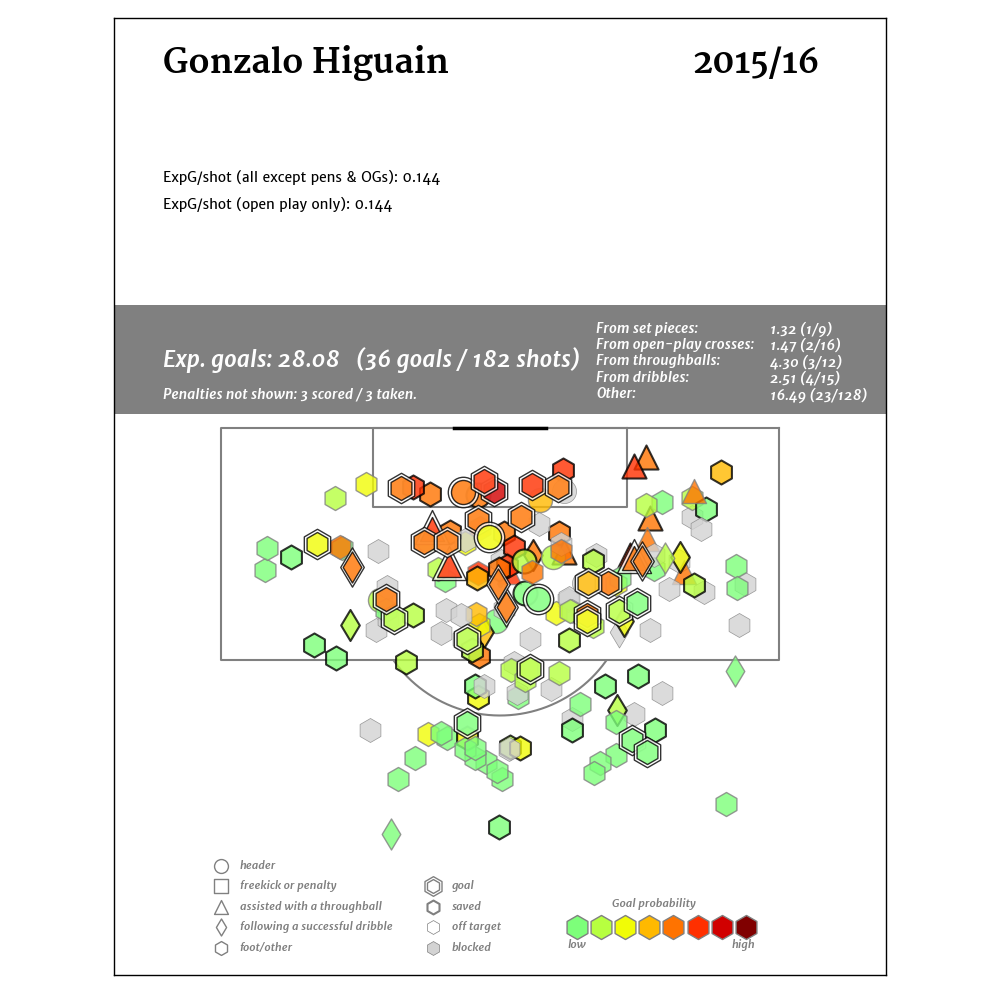
Obviously, his offensive prowess came at a cost: to bring the Argentinean to Turin Juve had to activate the release clause in his contract with Napoli. The €90 M they spent on him, is now the 4th biggest fee ever paid in the world's transfer market, topped just by fees for Ronaldo, Bale and Pogba. Precisely the money they got for the Frenchman financed the move for Higuaín, but still you wonder if splashing that amount on a soon-to-be 29 years old striker is the right thing to do. To replace a top class striker like Morata, they needed another top class striker and, together with Suárez and Lewandowski, Higuaín is arguably the best in the world right now. Yet el Pipita could offer his maximum output for just two or three season, so if we consider it by itself, it doesn’t sound as the smartest move.
However, if we put this transfer in the context of Juventus' recent seasons and of their entire reinforcement campaign, it starts to make much more sense. Juve have gathered domestic titles in numbers, but they missed European glory, even though they reached a CL final in 2014/2015. Key players like Buffon (38), Barzagli (35), Chiellini (32), Evra (35) and Licthsteiner (32) will have just a couple more occasions to try to win the Champions League, and so Juve decided to go all-in before the start of a new cycle.
In order to propel their European hopes, Juve acquired also Champions League veteran and multiple winner, Daniel Alves. At 33, he is a short-term solution, but even if his la Liga output declined last season, he is still one of the best right backs in the world right now. Other than top-class quality the Brazilian offers depth in a role where Juve had just Lichtsteiner (32), after the departure of Padoin and Cáceres: the two will likely alternate, in order to keep both fit in a season that, if everything goes well, will see them competing in 55+ games.
Before moving to Bayern, Benatia impressed in his only Serie A season, in which he even scored 5 goals for Roma. He will juice up (and even if he is 29, rejuvenate) Juventus array of elite defenders, establishing, together with Barzagli, Bonucci, Chiellini and Rugani arguably the best quintet of centre-backs in Europe. Ah, and he will cost just € 3 M, since they got him on loan with option to buy.
Marko Pjaca is another tricky transfer. Allegri usually does not field wingers, so the Croatian would be probably deployed as a forward or behind the strikers, either in a 4-3-1-2 or in a 4-3-2-1. Pjaca, who impressed in his limited playing time at the Euros, averaged 0.59 goals+assists per 90 during his Dinamo Zagreb career. As Cuadrado (who could re-join on loan before the end of the transfer window) did last year, he could offer unpredictability to their plays, creating chances for himself and his teammates with his dribbling.
Finally yet importantly, Juventus had to find a replacement for Pogba and they found him before they sold the Frenchman to Manchester United. At the start of the summer they acquired Miralem Pjanić, the only midfielder able to hit double figure in goals (10) and assists (12), last season, and subsequently the one with the highest scoring contribution. As you may already presume from this information, Pjanić had the best season of his career and the €38 M release clause Juve had to pay to employ his services is quite big, but there were not many midfielders of the same quality available for the same money in the ever-inflating transfer market.
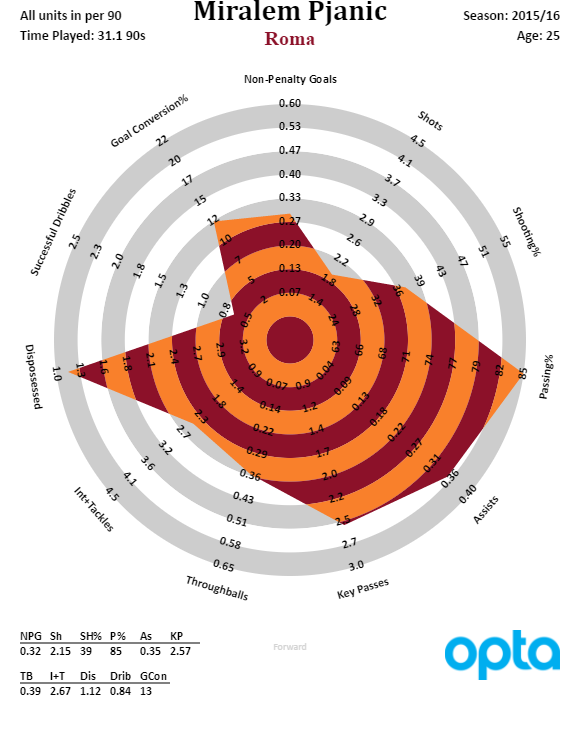
With Marchisio out until October, Allegri will probably use Pjanić as Juve deep-lying playmaker. When the Italian will come back from his injury one of the two would move to the no.8 spot in Juve three man midfield. Last season, the Bosnian had just two assists more than Pogba, but he almost doubled up the amount of key passes per 90 minutes played by the French. We will see if Allegri will decide to play him “à la Pirlo”, or as one of the interior, but no matter how, his vision and understanding of the game will be precious.
However, this creativity boost will have a price: Pjanić has not the same physicality of Pogba, even if the Bosnian tackles + interceptions averages are not particularly inferior (Roma and Juventus shared a similar amount of possession, so we can compare their defensive output). But I am sure they could compensate for this eventual problem by playing longer possessions, given how much they improved in terms of overall technique.
Metrics
In the first 12 games of last season Juventus averaged almost 18 shots per game, but they could not convert them. Indeed, they scored just 12 goals, while their opponents scored 11 by firing just 8.6 shots per game on average. That dozen games, in which Juventus converted their shots at a rate of 5.6%, risked compromising their title hopes, but it was obvious that the Bianconeri would improve their finishing sooner or later.
And so it happened: in the last 26 games of the season, Juventus averaged less shots per game (~15) and while they maintained their shots on target average of more than 5 per match, their conversion rate triplicated, reaching 15.2%. As if it was not enough they almost stopped to concede goals. In their comeback to the tile, the opponents fired 236 shots in 26 matches, yet Allegri’s team conceded just 10 goals. Their conversion rate against nosedived to 4.2%, so no wonder that Buffon broke Sebastiano Rossi’s Serie A record of 929 minutes without conceding a goal, pushing it to 973 minutes unbeaten. According to Michael Caley’s data, Juve scored 20% more goals than the expected, while conceding 15% less. This is a serious level of over performance, in which luck probably played a role, but as I said at the start of this preview, it was above all a manifestation of the gap between them and the rest of the league.
Paulo Dybala was surely their best player last season: only Gonzalo Higuaín topped his 0.80 non-penalty goals + assists per 90. Expected goals + assists suggested a value of around 0.60 for him, but every Juventus player had his stats doped by their crazy 26-game run to the title and the Argentinean made no exception. Now he will play alongside El Pipita, establishing the most powerful duo of strikers the league has seen in some years. The clinical Mario Mandzukić, who last season managed to score 0.44 non penalty-goals despite averaging just 1.62 shots per 90 and whose defensive contribution in pressing was incomparable, will probably have to sit on the bench, but I am sure he will play his part in this season too. And don’t forget Simone Zaza (if he stays), who netted arguably the single most important goal of the season in the home game against Napoli, and scored 0.68 goals overall in the 663 minutes he spent on the pitch.
European all-in?
Juventus have depth, experience, flexibility and a balanced roster with no clear weaknesses. Their defence was already one of the best in Europe, if not the best, and now they have an attack to rival the very best teams in the Champions League. In any case, they will likely acquire another midfielder and maybe Cuadrado before the end of the window.
They surely must clinch their sixth consecutive Scudetto, because otherwise, their season would be a flop, but above all, it is pretty clear they want to reach (and win) another European final. Their recruitment strategy has radically changed and it will probably make it to harder for them to rebuild in the coming years. However, you can’t blame them for their “European all-in”. In a season in which all the English teams are at the start of a new cycle and also Bayern Munich and Paris Saint-Germain have changed their managers, Juventus will have a concrete chance to win the Champions League, and even if they fail, they could regroup and try once again next season. Will they overcome their European obsession? Only time will tell.
